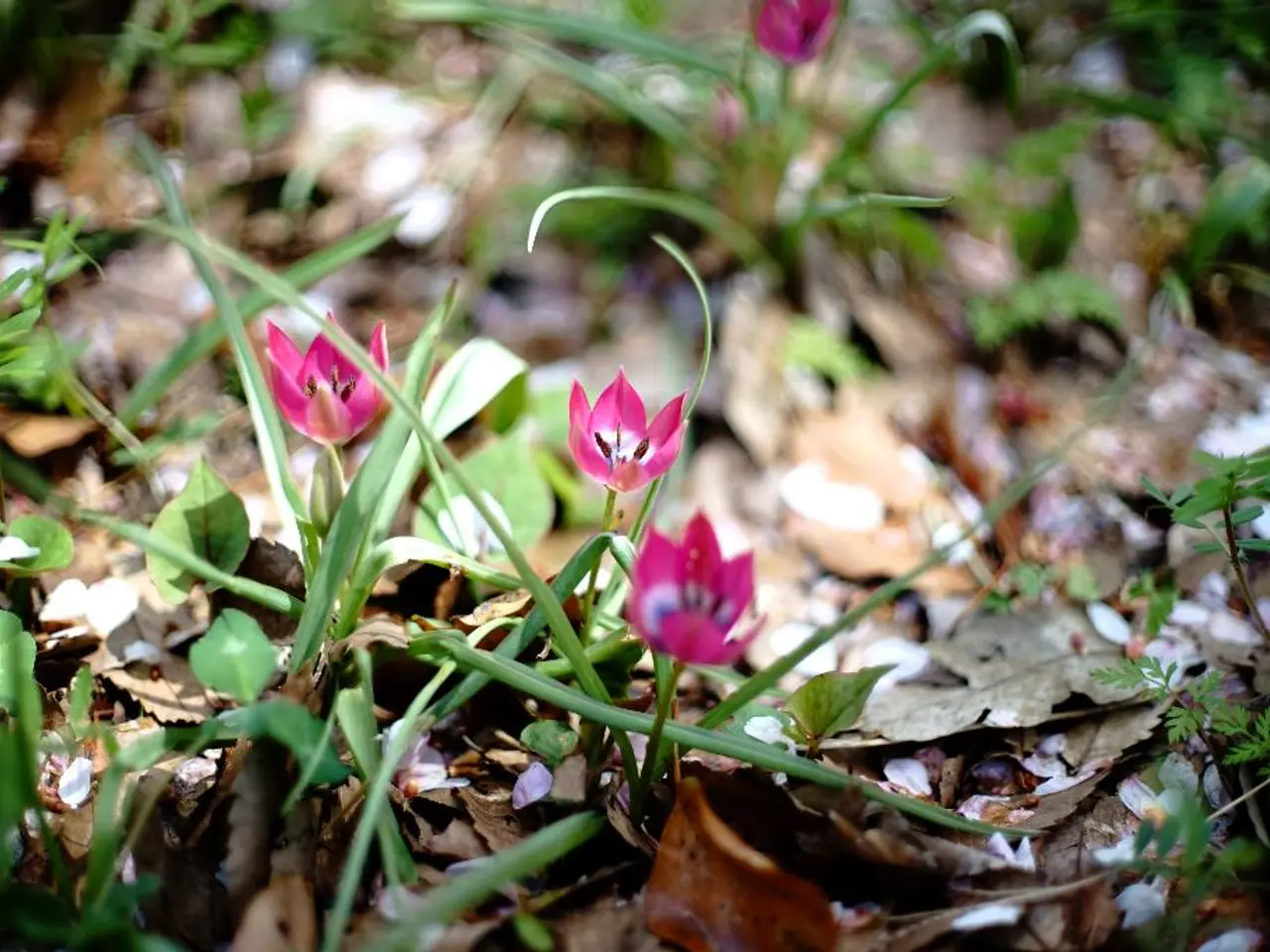Exploring Sugilite: Its Characteristics and Significance
In the fascinating world of mineralogy, one gemstone stands out for its unique vibrant purple hue - the sugilite. Named after its discoverer, Ken-ichi Sugi, a Japanese geologist who first identified the mineral in 1944, this captivating gemstone has since intrigued collectors and jewellery enthusiasts worldwide.
The mineral sugilite is a cyclosilicate, a compound of silicate tetrahedra arranged in rings. It is known for its medium hardness of 6 on the Mohs' scale and a vitreous to silky lustre. However, the origin of the bold purple color found in South African sugilite is caused by manganese impurities in its chemical structure.
The first commercial find of gem-quality sugilite was by accident during the development of the Wessels mine, a manganese mine, in May 1973, in the Kuruman district of South Africa's Northern Cape province. This discovery led to the extraction of large quantities of bright, saturated violet-to-magenta sugilite in 1979. The South African sugilite is referred to as 'wesselite', 'royal lavulite', or 'royal lazel' depending on its color.
Unfortunately, the known reserves of sugilite at the Wessels mine in South Africa are now exhausted. Sugilite from other countries, such as Canada, Italy, Australia, and India, is still being discovered, but it is rare and highly valuable, particularly in the form known as 'gel sugilite', a rare, dark purple translucent material.
In Japan, sugilite is found as yellowish-white to colorless small crystals that are not suitable for jewelry or ornamental works. This contrasts with the South African sugilite, which is described as having a vitreous lustre and granular texture. The mineral was initially found in an aegirine syenite intrusive rock on the Iwagi islet in southwest Japan.
Sugilite is sought after for its unique vibrant color and is mostly used as an ornamental material or included in jewelry as cabochons, beads, or carvings. A recent notable use of sugilite was for the wings of a decorative owl designed by Van Cleef and Arpels for their Noah's Ark collection in 2016.
Despite its allure, the pronunciation of sugilite is often mispronounced, with the 'g' being a hard 'g' instead of a soft one. Nevertheless, this captivating gemstone continues to fascinate and delight those who encounter it, offering a glimpse into the beauty and mystery of the earth's geology.
- The world of gemmology boasts various courses and workshops for enthusiasts, providing in-depth knowledge about unique stones like the sugilite.
- Publications on minerals and gemstones are abundant, offering valuable insights into the science behind unusual minerals such as sugilite.
- The foundation of a collectors' group dedicated to sugilite and other rare stones could be an exciting venture in the field of education and self-development.
- In the realm of finance, an investment in rare stones like sugilite can yield substantial returns, particularly if one can procure the coveted 'gel sugilite'.
- Lifestyle magazines often feature articles on designing jewelry with unique gemstones, showcasing the use of sugilite in innovative creations.
- The technology of creating replicas or simulated sugilite for use in entertainment or sports industries is an intriguing possibility, bridging the gap between art and science.




